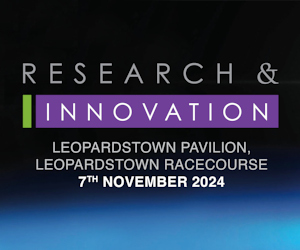Biomimicry for airport security
 The face of airport and border security are progressively changing because of new technologies. To contribute to this development, the EU-funded SNIFFER project took a page out of nature’s book, using biomimicry to make detecting and analysing odours of persons, illegal substances and in particular explosives more efficient.
The face of airport and border security are progressively changing because of new technologies. To contribute to this development, the EU-funded SNIFFER project took a page out of nature’s book, using biomimicry to make detecting and analysing odours of persons, illegal substances and in particular explosives more efficient.
While dogs are undoubtedly the most effective ‘tool’ when it comes to detecting and analysing odours, their training is time-consuming and has to be limited to a small selection of specific odours. In addition, sniffer dogs tire easily.
Their astute noses are often complemented by technical devices such as ion mobility spectrometers (IMS). This instrument, which is used to separate and identify ionised molecules in the air, is very useful for detecting narcotics and explosives. They are very sensitive, even to low concentration levels, but get saturated very quickly when exposed to high concentrations of narcotics or explosives, and then need a long time to return to working order – usually a couple of hours.
Combining nature and technology
The SNIFFER project approached the issue from a different angle, employing state-of-the-art technologies centred on a new generation of olfactory biosensors. The biosensors use proteins normally present in the nasal mucus of mammals, as well as on the antennae of some insects.
“They are odorant-binding proteins (OBPs) which capture odorant molecules and then transport those molecules to the olfactory receptors,” explains Emmanuel Scorsone, who coordinated the project on behalf of the French Atomic Energy and Alternative Energies Commission (CEA). “The olfactory receptors are the initial player in a cascade of transduction events that ultimately bring the olfactory information to the brain.”
OBPs are designed by nature to capture odorants in an open environment and are hence very stable. This stability compared to other proteins makes OBPs uniquely suited for sensors.
The researchers also looked into a second type of protein – the so-called major urinary proteins (MUPs). Also found in many animals, including mice, MUPs contain a great deal of information and play an important role in chemical communication between animals.
Picking out a whiff in a sea of smells
Coupling OBPs and MUPs – which can be genetically tuned to bind different classes of chemical compounds – to diamond sensors, the project produced prototypes of highly effective, flexible, and portable artificial sniffers dedicated to detecting explosives. In these sniffers, highly specialised basic biosensors are arranged into arrays to try to cover a wide spectrum of odours that are analysed using intelligent data processing.
“One of the main challenges was to collect vapour and particle samples from a very complex environment,” says Scorsone. “We are trying to detect them in very small concentrations against a very diverse chemical background in an airport, where we have odours from the duty-free shops, aircraft fuel and so on.”
And let’s not forget that the substances will more often than not be on moving targets, drastically limiting the time to sample. “Related to that is both the selectivity and the sensitivity of the device,” Scorsone adds. “We are doing really well in that respect. The IMS causes high rates of false alarms, and we are trying to improve on that.”
A nose for explosives
Testing the prototypes under real-life conditions with real explosives in Athens airport allowed the team to benchmark the SNIFFER system against existing technology. “We presented the test results to a panel of end-users, and they were very pleased to see this level of maturity and the outcome itself,” Scorsone reports. “We are not yet ready for industrial exploitation, but it was good enough to demonstrate the feasibility of the concept.”
The technology is now being studied further in the framework of another Horizon 2020 project dedicated to other border security scenarios, this time focusing on narcotics, explosives and other illegal goods in containers in an attempt to take the SNIFFER project to the next level.
What is Biomimicry?
Biomimicry is an approach to innovation that seeks sustainable solutions to human challenges by emulating nature’s time-tested patterns and strategies. The goal is to create products, processes, and policies—new ways of living—that are well-adapted to life on earth over the long haul.







